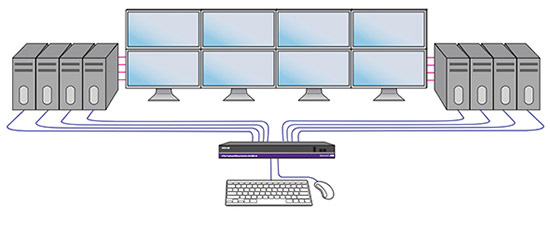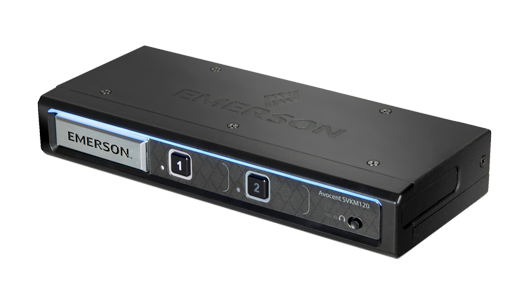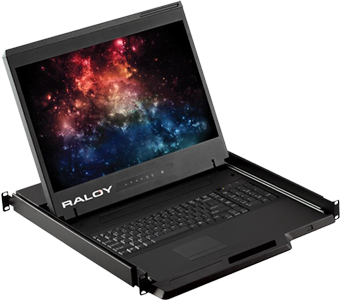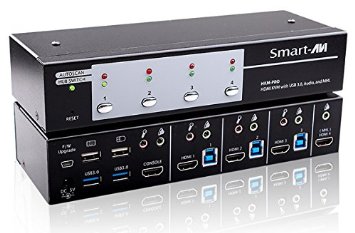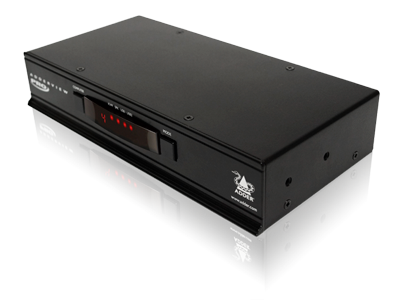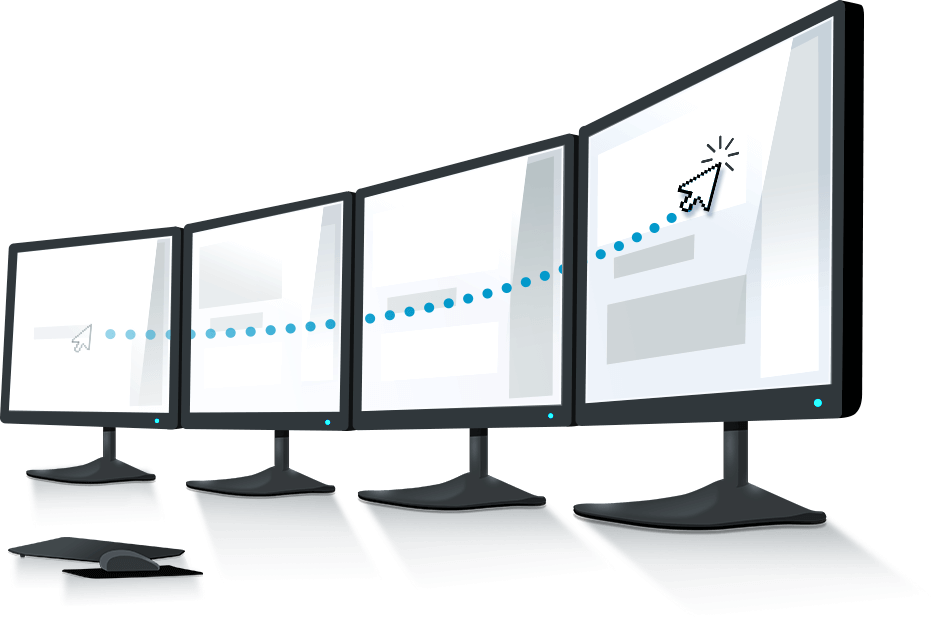What is a USB KVM?
A USB (Universal Serial Bus) KVM switch is very similar to a legacy KVM in that it allows you to connect multiple computing devices to a single keyboard, mouse and monitor. The key difference is that the USB based switch does not utilize PS/2 keyboard and mouse technology. All keyboard and mouse connections are accomplished using Universal Serial Bus technology. Depending on manufacturer and model, you will find various options that benefit the end user. They include, but are not limited to:
- Audio pass through - control and share audio-out ports
- Microphone pass through - Control and share audio-in ports
- Universal Serial Bus ports for external device connection - share printers, card readers and other devices across servers
- VGA, DVI and HDMI display support - be sure to choose a compatible monitor connection
USB Switch Applications
These switches can be used in a variety of situations. From a user that with two CPU’s who wishes to consolidate into a single keyboard, mouse and display; all the way to the high end user that needs access to many devices and multiple displays with a single keyboard and mouse. The need for Universal Serial Bus ports, audio and microphone switching also play an important part in the switch application.
Key thing to consider when buying a USB Switch
The things to consider when purchasing your switch include the following:
- Quantity of source devices - 2 port, 4 port, 8 port, and 16 port are the most popular with some manufacturers providing 32 and even 64 port models
- Cable lengths - short applications can use standard Universal Serial Bus and Video cables, longer runs will require "combo cables" or KVM dongles for maximum distance
- Type of display, be it VGA, DVI, HDMI, DisplayPort
- Required resolution - higher resolutions generally require dual link DVI, HDMI or DisplayPort connections
- Required number of user displays / monitors – models supporting two, four and more monitors are available and also requires video cards that can support multi-monitor environments
- Universal Serial Bus port extension / sharing for peripheral devices - look for devices with an integrated USB hub to share printers and other Universal Serial Bus devices
- Required audio and microphone capability - look for devices with audio support to share speakers and microphones across servers/computers
- External power supply or draw from connected PCs - some devices can draw power directly from attached PCs saving power strip space



